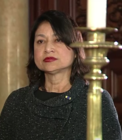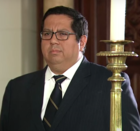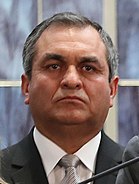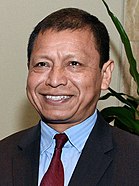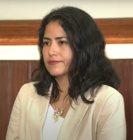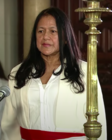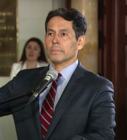Council of Ministers of Peru
The Council of Ministers is a constitutional body made up of a meeting of all the Ministers of State of the Republic of Peru. It is chaired by the president of the Council of Ministers of Peru, who is directly appointed by the president of Peru. The President of the Cabinet is the one who presides over the meetings of the Council, except when the President of the Republic summons him or meets him with them and he is the one who presides over it.
The ministers are appointed directly by the President of the Republic on a proposal, coordinating with the PCM. Within thirty days after a cabinet is appointed, they must appear before the Congress of the Republic of Peru, which must grant them a vote of confidence. In order for the Council of Ministers to reach an agreement, the approval vote of the majority of its members is required. The current president of the Council of Ministers is the lawyer, Alberto Otárola.
Requirements
According to Article 124 of the Political Constitution of Peru, to be a Minister of State, the following is required:
- Be Peruvian by birth.
- Being a citizen in physical exercise.
- Twenty-five years old.
- Members of the Armed Forces and the National Police can be ministers.
Article 92 states that congressmen can perform the public function of Minister of State
Functions
The Council of Ministers has, according to the constitution, the following main powers:
- To approve the bills submitted to Congress by the President of the Republic.
- Adopt the legislative decrees and emergency decrees issued by the President of the Republic, as well as the draft laws, the decrees and resolutions provided for by law.
- Deliberate on matters of public interest.
They also have among their functions:
- To direct the sectoral strategic planning process, within the framework of the National Strategic Planning System and to determine the national functional sectoral objectives applicable at all levels of government; to approve action plans; and to allocate the necessary resources for their implementation, within the corresponding budgetary allocations.
- To approve the budget proposal of the entities of their sector, in accordance with article 32, and to monitor its implementation.
- Establish management measurements of your sector entities and assess their compliance.
- Propose the internal organization of its Ministry and approve it in accordance with the powers assigned to them by this Law.
- To designate and remove the holders of the posts of trust of the Ministry, the holders of Public Agencies and other entities of the Sector, when this competence is not expressly attributed to the Council of Ministers, to another authority, or to the President of the Republic; and to elevate to this the proposals of designation in the opposite case.
- Maintain relations with regional governments and local governments in the field of competencies attributed to their sector.
- Refresh the presidential acts concerning its Ministry.
- Expedite Supreme Resolutions and Ministerial Resolutions.
- To transfer competencies, functions and sectoral resources to regional and local governments and to account for their implementation.
- To exercise the other functions entrusted to them by the Constitution of Peru, the laws and the President of the Republic.
The Ministers of State may delegate, to the officials of their ministerial portfolio, the faculties and attributions that are not exclusive to their function, provided that the regulations authorize it.
Ministries of Peru
Ministries disabled
- Ministry of Public Works and Development of Peru: It was created on January 18, 1896 by the House of Senators, it contained the sectors of Public Works, Industry and Benefit. The Minister was dispatched to an office of the Government Palace; he was subsequently transferred to a place where the Municipal Palace is being erected today. In 1910 his permanent transfer was arranged to the Palacio de la Exhibition, where he shared the facilities with the Municipal Council of Lima; with time this place was insufficient and the ministry was located in the building located on 28 July. In 1969, during the government of Juan Velasco Alvarado, the Ministry of Development and Public Works was transformed into the Ministry of Transport and Communications..
- Ministry of Transport, Communications, Housing and Construction: It resulted from the merger of the Ministry of Transport and Communications with the Ministry of Housing and Construction in 1992. On 10 July 2002, Act No. 27779 was enacted which approved the separation of sectors.
- Ministry of the Presidency: It was created in August 1985 with Law No. 24297 and had as a standard function and coordinated the functioning of the multisectoral entities and decentralized public bodies of the central Government. It was deactivated in 2002.
Contenido relacionado
North American Free Trade Agreement
Annex: Elections in Spain
International Criminal Court



